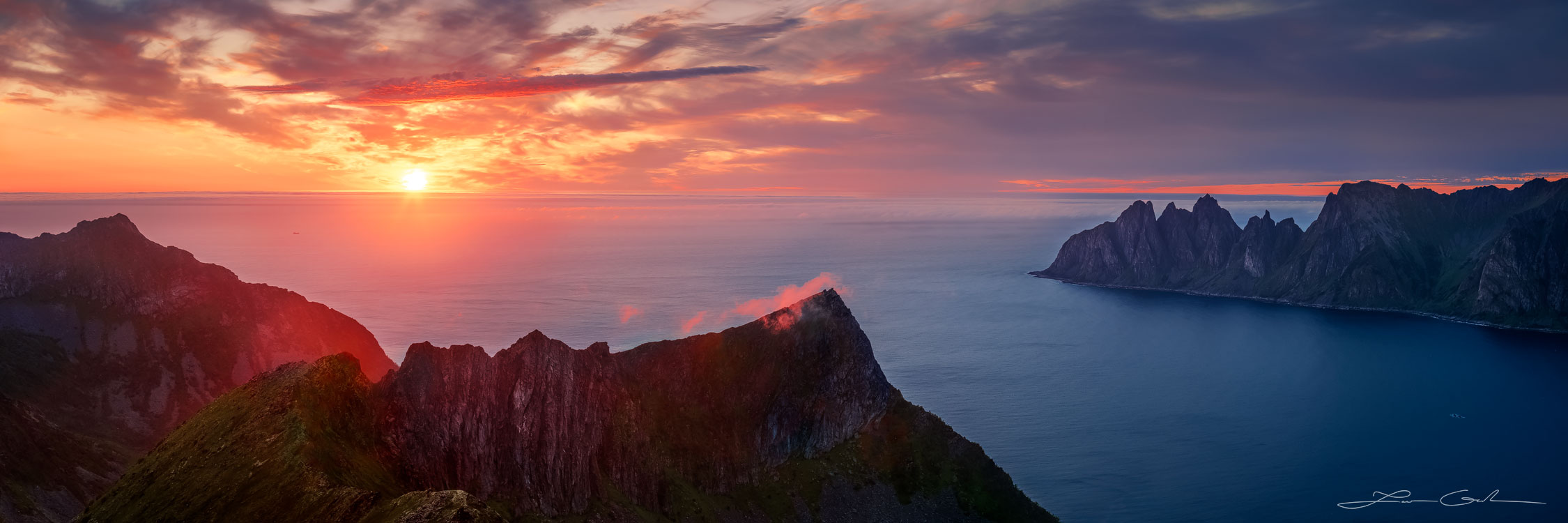
Norway Landscape Photography
NORWAY LANDSCAPE PHOTOGRAPHY Magical Scandinavian Fine Art From the North Norway is a landscape photography dream destination. It offers outstanding opportunities for the nature photographer
Mountain photography fine art is a subject that has captured the imagination of photographers and art enthusiasts for generations. From the soaring peaks of the Himalayas to the rugged beauty of the Rocky Mountains, mountain landscapes offer a wealth of opportunities for creating powerful and captivating images that evoke a sense of awe and wonder. Whether captured through the lens of a camera or rendered in paint, mountain scenery has long been a source of inspiration for artists seeking to escape the business of city life and capture the majesty and grandeur of nature.
At its core, mountain photography fine art is about much more than simply taking pictures of mountains. It is an art form that requires skill, creativity, and a deep appreciation for the natural world. The best mountain photographers are able to capture not only the physical splendor of these landscapes, but also the emotional and spiritual resonance they hold for so many people around the world.
In this article, we will explore the world of mountain photography fine art, examining the techniques, tools, and approaches used by photographers to capture the grandness and wonder of mountains. We will discuss the history of mountain photography, the role of composition, the challenges and opportunities of different seasons and weather conditions, and more.
You might be a professional photographer, an art enthusiast, or simply someone who loves the mountain landscapes. Hopefully this article will inspire you to explore the world of capturing mountains with a camera, and discover new ways to capture the essence of these majestic and awe-inspiring landscapes.
Mountain photography fine art is a unique and beautiful genre of photography that captures the beauty and splendor of the mountain terrain. Mountains have always been a popular subject for fine art photography, and for good reason. There is something attractive about the towering peaks, the rugged terrain, and the dramatic play of light and shadow that make mountain photos so inspiring.
One of the unique features of mountain views is the way they interact with light. The changing light conditions in the mountains can create a variety of moods and atmospheres, from the warm and golden hues of sunrise to the cool and moody tones of a stormy, or winter, day. This interplay of light and shadow is a key element when shooting mountains, and many photographers spend years honing their skills to capture the perfect moment.
Another key aspect of mountain landscapes is their ever-changing weather patterns. Mountains can create their own weather systems, leading to sudden and imposing shifts in weather conditions. This creates unique opportunities for mountain photography, with artists able to capture the gripping contrasts of shifting weather conditions.
The textures and patterns of the rocks and vegetation in mountain areas are also a key aspect. From the delicate patterns of wildflowers to the rugged contours of rocks and cliffs, there is a wealth of visual detail that can be explored and captured through photography.
Of course, the most iconic aspect of mountain environments is the tall, jagged peaks that dominate the skyline. Towering peaks provide a sense of scale and perspective that is unmatched in any other terrain. Many mountain photographers specialize in capturing the elegance of these peaks, using techniques such as wide-angle lenses and panoramic shots to create images that convey a sense of magnificence and awe.
In short, mountain photography fine art is a genre that celebrates the unique and captivating looks of mountain landscapes. Sometimes it’s the dramatic play of light and shadow, the ever-changing weather patterns, the textures and patterns of rocks and vegetation, and other times it is the awesome peaks themselves, there is no shortage of inspiration for mountain photographers looking to capture the essence of these awe-inspiring landscapes.
Mountain photography fine art has a rich and fascinating history that spans over a century. From the earliest days of photography, photographers have been drawn to the dramatic and majestic views of mountains, seeking to capture their glory and power in images that transcend mere documentation. In this section, we will explore the roots of mountain photography and trace its development to the present day.
The earliest mountain photographs were taken in the mid-19th century, as the new technology of photography was just beginning to take hold. At that time, photography was primarily seen as a means of capturing images of the natural world for scientific study and exploration. However, some early photographers recognized the artistic potential of mountain landscapes, and began to experiment with composition, lighting, and other techniques to create images that went beyond mere documentation.
The Bisson brothers of Paris used plates as large as 44 cm X 54 cm and ascended to the summit of Mont Blanc with a caravan of twenty-five guides and porters to take three panoramas. Aimé Civiale, whose heavy equipment weighed over 500 lb, and needed twenty-five mules to carry it, and was restricted to medium levels. In 1865, the Rev. H. B. George, who was the first editor of the Journal, undertook a tour of the Oberland glaciers along with a London photographer named Ernest Edwards.
Another early mountain photographer was Vittorio Sella, an Italian photographer who began taking photographs of the Alps in the late 1800s. Sella’s images captured the beauty of the mountains, using eye-catching lighting and composition to create images that were both beautiful and awe-inspiring. Sella’s work helped to establish mountain photography as a legitimate art form, and his images continue to inspire photographers today.
In the early 20th century, mountain photography fine art continued to evolve, as photographers began to explore new techniques and styles. Ansel Adams, one of the most influential photographers of the 20th century, was particularly drawn to mountains, and his iconic images of Yosemite National Park and other mountain imagery helped to define the genre. Adams’ work emphasized the use of contrast and tonality, creating images that were both realistic and highly expressive.
As the 20th century progressed, the genre continued to evolve, as photographers began to experiment with new techniques and styles. Today, it is a vibrant and diverse genre, encompassing everything from large-format landscape images to abstract, experimental works. Whether capturing the soaring peaks of the Himalayas, the rugged charm of the Rocky Mountains, or the stark desolation of the Antarctic, mountain photographers continue to push the boundaries of the medium, creating images that are both technically accomplished and emotionally resonant.
The history of mountain photography is a long and rich one, spanning over a century of artistic experimentation and evolution. From the earliest days of photography to the present day, photographers have been drawn to the dramatic and majestic mountains, seeking to capture their brilliance and power in images that go beyond documentation. Today, this art form remains a popular and dynamic genre, with a rich history and a bright future.
Mountain photography fine art is a very exciting genre that offers endless opportunities. Regardless of skill level, with a few tips and techniques photographers can create amazing mountain photographs that are worthy of being displayed as fine art.
One of the most important aspects is finding the best vantage points to capture your subject. This requires careful scouting of the area, whether it’s by foot or by car, to identify the most picturesque spots. Often, the best views are from high vantage points, such as mountaintops or overlooks, which provide expansive views of the surrounding landscape.
In addition to finding the best vantage points, timing is also critical when it comes to creating beautiful mountain art. The right time of day can make all the difference in the quality of your shot, so it’s important to plan ahead and choose the best time of day for optimal lighting. Mornings and late afternoons, or even evenings, are often considered the best times to shoot, as the soft, warm light creates a beautiful, natural glow that can add depth and dimension to your images.
Using filters and other accessories is another key technique in mountain photography fine art. Filters can help to enhance the shot by controlling the light, reducing glare, and bringing out the colors and textures of the landscape. Polarizing filters, for example, can help to reduce reflections on water and bring out the blues in the sky, while neutral density filters can be used to create long-exposure shots of moving water or clouds.
Finally, editing techniques can be used to bring out the best in the final image. There are many techniques for adjusting a raw image in order to bring it to life as the photographer saw it out in the field. While the purpose of this article is not to examine those in depth, some of the most common ones are adjusting exposure, temperature, contrast, etc. However, selective adjustments are more powerful and effective, rather than global ones. In any case, post-processing can help to enhance the mood and atmosphere of the shot. However, it’s important to use editing techniques sparingly, as over-editing can detract from the natural beauty of the landscape.
Creating impressive mountain images that qualify as fine art requires a combination of technical skill, artistic vision, and a deep appreciation for these landscapes. By following some basic tips and techniques for finding the best vantage points, choosing the right time of day, using filters and accessories, and editing the final image, you can capture the magic of mountain photography and create images that inspire and delight viewers.
When it comes to mountain photography fine art, capturing the breathtaking beauty of majestic landscapes can be both challenging and rewarding. It presents a unique set of technical challenges that photographers must navigate in order to create stunning and impactful images. In this section, we will explore some of the key technical aspects that fine art photographers must consider in order to capture the perfect shot.
One of the most critical technical considerations is choosing the right lens and camera settings. The choice of lens is particularly important, as it can drastically impact the look and feel of your images. Wide-angle lenses are often used to capture the grandeur of mountain nature, while telephoto lenses can help you to isolate and focus on specific details within a scene. Other important camera settings to consider include aperture, shutter speed, and ISO, as these can impact the overall exposure and sharpness of your images.
However, even with the right equipment and settings, photographing mountains can be challenging due to the unpredictable and ever-changing nature of mountain landscapes. Extreme weather conditions, including high winds, rain, snow, and fog, can make it difficult to capture clear and sharp images. In addition, mountain environments can be dangerous, requiring photographers to take extra precautions when navigating difficult terrain or working at high altitudes.
To create impressive mountain photography fine art one needs patience and persistence, as capturing the perfect shot can often require waiting for the right conditions or taking multiple images over a period of time. Fine art photographers must be willing to invest time and energy into their craft, often returning to the same location over and over again to capture the ideal image.
Another key technical consideration is the importance of lighting. The quality and direction of light can have a significant impact on the mood and atmosphere of a mountain landscape, and photographers must be able to work with a range of lighting conditions in order to create visually striking images. In addition, the time of day can also impact the lighting conditions, with early morning and late afternoon often being the best times to capture the warm, soft light.
Mountain photography requires a combination of technical skill, creativity, and persistence. Photographers must be able to navigate the unique challenges of mountain environments, including unpredictable weather conditions and difficult terrain, while also working with a range of camera settings and lighting conditions to capture impactful images. By mastering these technical aspects, fine landscape photographers can create images that capture these incredible environments.
Mountain photography is a fine art that requires a keen eye for detail, an understanding of light, and the ability to capture the mood and atmosphere of the landscape. One of the key elements that can have a significant impact on the visual impact of the images is the weather.
Rain, fog, snow, and other weather conditions can add a layer of texture, depth, and interest to mountain photographs, creating a sense of drama, mood, and atmosphere that would be difficult to achieve in clear weather conditions. For example, capturing the soft, ethereal quality of mist as it shrouds the mountain peaks can create an almost dream-like effect, while snow can provide a stark contrast against the dark rock and sky, adding a sense of purity and tranquility.
Moreover, the impact of weather on mountain photography is not limited to the actual conditions at the time of shooting. The changing weather patterns throughout the year can also impact the visual impact of mountain landscapes. For example, the golden light of a late autumn afternoon can create a warm, inviting feel that is absent during the harsh light of midsummer. Similarly, the snow-covered mountains of winter can create a sense of stillness and isolation that is not present during the lush, green days of spring.
To create powerful and captivating mountain photographs, it is essential to understand the impact of weather on the landscape and to use it to your advantage. By paying attention to the changing weather patterns, the quality of light, and the mood and atmosphere of the landscape, the artwork can be elevated to a fine art form that evokes a sense of wonder and awe.
In mountain photography fine art, the composition of an image plays a vital role in capturing the attraction of the landscape. A skilled photographer understands that a mountain landscape provides endless opportunities for creating powerful images through careful composition. Using various techniques, a photographer can capture the magic of the mountains and create an image that is not only aesthetically pleasing but also tells a story.
One of the key techniques is the use of wide-angle shots. The use of foreground and background is also an important element. By including a close foreground element, such as a rock, a tree, or a flower, the photographer can create a sense of depth and perspective in the image. This technique can be used to draw the viewer’s eye into the image and create a sense of immersion in the mountain landscape. Additionally, including a distant background element, such as a mountain peak or a cloud formation, can help to add scale to the image.
Another technique commonly used in photograph mountains is the use of zoomed shots to give perspective. By zooming in on a specific detail within the mountain landscape, the photographer can create a sense of depth and intimacy. This technique is often used to highlight particular features of spectacular peaks. By isolating the subject in this way, the photographer can draw the viewer’s attention and create portraits of mountains.
In panoramic compositions, the photographer can capture the open mountain landscape in a single image. By taking multiple shots and stitching them together in post-processing, the photographer can create a panoramic image that conveys the grandeur and vastness of the mountains. Panoramic photography often corresponds closer to the visual reality in the mountains and because of that makes for very appealing fine art prints.
Another aspect of composition is the use of vertical shots. Vertical photographs allow the artist to emphasize the height of massive mountains. They also isolate the viewer’s view horizontally which further highlights vertical distance in the mountains, and emphasize scale.
Composition plays a crucial role in mountain photography fine art. By using a variety of techniques such as wide-angle shots, zoomed shots, panoramic compositions, and vertical orientations, a skilled photographer can create powerful and visually compelling images that capture the essence of the mountain landscape. Through careful composition, a photographer can tell a story, convey a sense of awe, and transport the viewer to the amazing world of the mountains.
HDR (High Dynamic Range) photography is a technique that has gained increasing popularity in recent years, particularly in the realm of mountain photography and fine art. The potential benefits of using HDR techniques in the field are many, allowing photographers to capture the full range of tones and colors in a scene, from the brightest highlights to the deepest shadows. This can result in images that are more vibrant and dynamic, with a greater sense of depth and detail than would be possible with traditional photography techniques.
One of the key advantages of using HDR techniques is the ability to capture the full range of colors and tones that are present in a scene. This is particularly important, where the play of light and shadow on the landscape can be dramatic. By using HDR techniques, photographers can ensure that the colors and tones in the image accurately reflect the scene as it appeared in person, creating images that are more true-to-life.
Another benefit of using HDR techniques in mountain photography is the ability to capture images with greater detail and clarity. This is useful when photographing scenes with a high degree of contrast, such as a snow-covered mountain peak against a deep blue sky.
Despite the many benefits of using HDR techniques, there are also potential pitfalls that photographers should be aware of. For example, if not used carefully, HDR techniques can result in images that appear over-processed or unnatural, with an artificial-looking quality that can detract from the beauty of the scene. Additionally, HDR techniques can be time-consuming and complex, requiring specialized technical know-how to achieve the desired effect.
Mountain photography fine art offers an array of techniques and styles to capture the breathtaking views of the natural world. One such technique is the use of black and white photography, which can add an extra layer of drama and emotion to mountain landscapes.
The power of black and white photography lies in its ability to emphasize the essence of the subject matter. This can mean capturing the rugged, raw, and majestic nature of the mountains themselves. Black and white photography can heighten the contrasts of the subject matter, highlighting the authenticity and impact of the landscape.
One key technique for creating stunning monochrome images is to use strong contrast. By balancing light and shadow, contrast can add depth and dimension to the image. Additionally, using big shapes and bold lines can create a sense of movement and dynamism within the photograph. Texture is also an important element to consider, as it can add detail and nuance to the image.
Black and white mountain images can also offer a timeless quality to the image, creating a sense of history and permanence that color photography may not always convey. By stripping away the color, the focus shifts to the composition, lighting, and subject, allowing the photographer to create a more expressive and evocative image.
Black and white mountain images can be an effective tool for capturing the raw beauty and excellence of mountains. By using techniques such as strong contrast, big shapes, and texture, photographers can create moving images that convey the essence of nature. One could be working with film or digital, yet black and white mountain photography offers endless possibilities for artistic expression and experimentation.
Throughout the year, mountain environments undergo a transformation, each season bringing its own unique beauty and challenges. From the bright and colorful hues of autumn to the stark magnificence of winter, each season offers a different perspective on the mountains and provides photographers with a wealth of opportunities to capture gorgeous images.
In the fall, the mountains burst into color as the leaves of the trees turn brilliant shades of orange, red, and gold. This creates a striking contrast against the rugged and often dark peaks, making for some truly remarkable mountain photography fine art.
In the winter, the mountains are transformed into a pristine and ethereal landscape as snow blankets the peaks and valleys. This creates a stark and striking contrast against the blue skies and rugged terrain, making for some breathtaking images.
In the spring, the mountains begin to awaken from their winter slumber as the snow melts and the trees start to bloom. This creates a soft and gentle appeal that is often overlooked in mountain photography. The snow melts and fills the rivers with white foaming water as life returns to the high country.
In the summer, the mountains are at their most vivid as the lush greenery and wildflowers bloom in the warm sun. This creates a colorful landscape that is a favorite of many mountain photographers.
Capturing the changing seasons of mountains is a truly rewarding experience. By taking advantage of the uniqueness and challenges of each season, photographers can create fantastic and evocative images that capture the essence of these majestic landscapes.
Mountain photography fine art can be an exhilarating and rewarding pursuit, when it comes to capturing the night sky in all its glory. The splendid landscapes and clear skies found in mountain ranges around the world provide a marvelous backdrop for capturing the Milky Way, star trails, and moonlit landscapes.
Photographing the night sky in mountain landscapes poses unique challenges that require careful planning and preparation. One of the most critical factors to consider when capturing the night sky is the availability of dark skies. In mountain ranges away from cities, light pollution is usually minimal, and the Milky Way and other celestial objects are much more visible.
Another important consideration when capturing the night sky in the mountains is the weather conditions. Clear skies with little to no wind are ideal for capturing sharp, well-defined images of stars and other celestial objects. Planning your shoot around the phases of the moon can also be beneficial, as the brightness of the moon can impact the visibility of stars and other objects.
To capture stunning images of the night sky in the mountains, photographers need to use specialized equipment and techniques. Long exposure times are typically necessary to capture the dim light of stars, which means using a tripod to keep the camera steady during long exposures. Wide-angle lenses are also a popular choice for capturing the immense expanse of the night sky and its stars.
When it comes to specific subjects, capturing the Milky Way is a favorite among mountain photographers. To photograph the Milky Way, you need to choose a location that has an unobstructed view of the sky, away from any light pollution. During the summer months, the Milky Way is visible in the Northern Hemisphere during the hours of darkness.
Capturing star trails is another popular technique for photographing the night sky in the mountains. This technique involves using long exposure times, typically over several hours, to capture the apparent movement of stars as the Earth rotates. Star trail images can be mesmerizing and beautiful, showcasing the vastness of the universe against the enthralling backdrop of summits.
With so many different mountain ranges in the USA, there is an endless array of possibilities for capturing breathtaking images that showcase the diversity of the American landscape. From the soaring peaks of the Alaska ranges, to the Appalachian mountains in the east and everything in-between: the Cascades in the northwest, the Sierra Nevada, the Rocky Mountains in New Mexico, Colorado, Utah, Wyoming, Idaho, and Montana. Each mountain range offers a unique set of features and characteristics that make it an ideal subject for mountain photography.
The Sierra Nevada is an amazing mountain range in the USA, with towering peaks that soar above the surrounding landscape. The range is known for its high elevation, imposing granite cliffs, and alpine lakes. It is also known for the highest mountain in the Continental US – Mount Whitney, reaching 14,505 ft (4,421 m) of elevation.
The Cascades, located in the northwest, are another beautiful mountain range that offers a range of photographic opportunities. The range is home to a diverse range of landscapes that can be captured in all seasons and the famous Mount Rainier (14,417 ft (4,394 m)).
The Rocky Mountains in New Mexico, Colorado, Utah, Wyoming, Idaho, and Montana are a massive range with immense beauty. Featuring many national parks, jagged peaks, lakes, rivers, valleys, the Rockies are a photographer’s paradise. The autumn colors of the aspen trees add a burst of color to the landscape, while winter brings snow and ice that transform the mountains into a winter wonderland.
Alaska is home to endless and less frequented mountains. It is also home to the highest mountain peak in North America – Denali, which was previously called Mount McKinley. It holds the title of being the tallest with a summit elevation of 20,310 feet (6,190 m) above sea level.
Finally, the Appalachian Mountains in the east offer a different type of mountain photography experience. With rolling hills, dense forests, and a rich cultural history, the Appalachian Mountains offer a unique set of photographic opportunities. From the colorful autumn foliage to the spring wildflowers, the range is a showcase of natural wonder that is perfect for capturing mountain images.
Mountain photography fine art has the power to evoke strong emotions and inspire connections with nature. As a rich medium of visual storytelling, it plays a significant role in raising awareness about environmental conservation. The majesty of mountains have been a source of inspiration for photographers around the world for decades. Through their art, photographers have been able to capture the essence of mountains, highlighting their unique features and creating a sense of intimacy with the viewer.
However, beyond their aesthetic appeal, mountain photographs have a crucial role to play in environmental conservation. By capturing the beauty of these fragile landscapes, photographers can raise awareness about the need to protect them from environmental degradation and climate change. The use of fine art techniques, such as composition and lighting, can draw attention to the purity and fragility of these natural wonders, highlighting their importance in our lives and the need for their preservation.
Through their art, mountain photographers can inspire people to take action to protect these natural wonders, whether it is through supporting conservation efforts or making lifestyle changes to reduce their carbon footprint. In this way, mountain photo prints can be a powerful tool for advocacy, inspiring positive change and promoting environmental sustainability.
Furthermore, mountain photographs can also play a role in documenting the changes and impacts of environmental degradation on mountain landscapes. As climate change and other environmental issues continue to threaten these fragile ecosystems, the work of mountain photographers becomes even more critical in documenting these changes and highlighting the need for action.
Mountain photography fine art is not just about capturing beautiful landscapes; it is about using the power of visual storytelling to raise awareness about the need to protect these delicate environments. Through their art, mountain photographers can inspire people to connect with nature and take action to protect these magnificent landscapes for future generations.
Mountain photography is a fine art that captures the awe-inspiring allure of the natural world. But as with any art form, there are ethical considerations that must be taken into account when photographing fragile and pristine mountain landscapes. The impact of tourism, the importance of respecting local cultures and traditions, and the need to minimize one’s carbon footprint are just a few of the issues that arise when it comes to the ethics of photographing mountains.
One of the primary ethical considerations is the impact of tourism. While mountain areas are undoubtedly beautiful and alluring, the influx of visitors can put a strain on the fragile ecosystems that make up these environments. From the trampling of delicate alpine flowers to the erosion of hiking trails, the impact of tourism can have a significant impact on nature. As mountain photographers, it is essential to be mindful of the impact of our presence on the landscape and to take steps to minimize any negative effects.
Respecting local cultures and traditions is another crucial aspect of ethical mountain photography. Mountains have played a significant role in the cultures and traditions of many indigenous peoples, from the Inca of the Andes to the Sherpa of the Himalayas. As visitors to these regions, it is essential to respect the cultural practices and beliefs of the people who live there. This may mean seeking permission before photographing certain areas or landmarks, being mindful of dress codes and etiquette, or avoiding behaviors that may be considered disrespectful or insensitive.
Mountain photography fine art is a wonderful form of artistic expression that showcases the aesthetics of the world’s most breathtaking landscapes. With its unique combination of technical skill, creativity, and a deep appreciation for the natural world, this photo genre has the power to transport us to other worlds, to evoke powerful emotions and memories, and to leave us in awe of the magic that surrounds us.
Through this article, we have explored various aspects, from the technical considerations of camera gear and composition to the creative aspects of visual aesthetics. We have also discussed the many ways in which weather, light, and atmosphere can impact the visual impact of mountain landscapes, creating a sense of drama and mood that is unmatched in any other form of photography.
But mountain photography is not just about capturing excellent images. It is also about the transformative power of nature and the positive effects that spending time in the mountains can have on the human spirit and soul. Being in the presence of such magnificence can provide us with a sense of perspective, reminding us of the natural blessings around us. It can be a vehicle for connecting with nature, for celebrating the beauty of the world, and for reminding us of the importance of preserving it for future generations.
In today’s fast-paced and often chaotic world, it is easy to lose touch with the wonder of nature. But through the lens of mountain photographers, one can be inspired, uplifted, have a rekindled appreciation, and rediscover the simple pleasures of being in the presence of nature’s majesty.

NORWAY LANDSCAPE PHOTOGRAPHY Magical Scandinavian Fine Art From the North Norway is a landscape photography dream destination. It offers outstanding opportunities for the nature photographer

How do you choose the right frame for a landscape print? Mounting a high quality frame around a landscape print can create an impressive piece
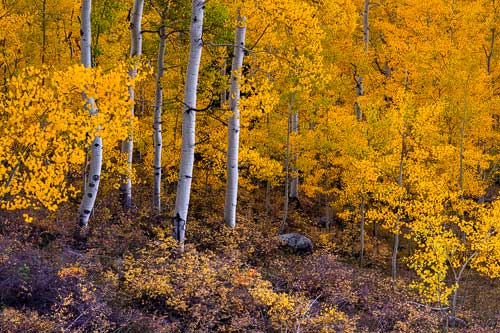
Many people go out to see the fall colors in Colorado, but how many truly experience this annual ritual of nature? As a landscape photographer
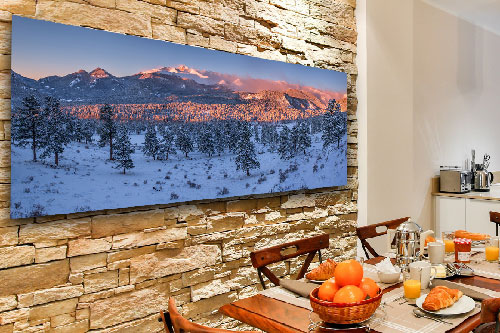
Did you know that the color temperature of a light source can dramatically affect your photographic prints? Understanding color temperature for prints lighting can help
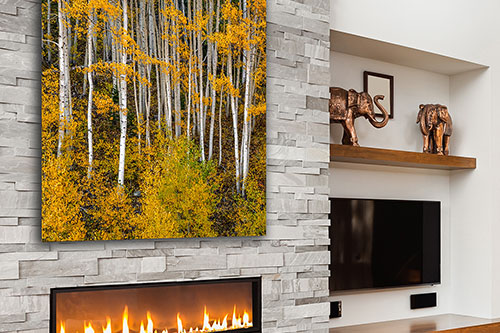
Choosing the right print size for your art wall is important in order to create an elegant decor. Too small, and the fine art may

Maroon Bells winter photography can be quite an exhilarating experience. This Colorado gem is a popular landscape photography destination, especially during the fall. For this

Telluride Fine Art Photography Gallery LARGE FORMAT PRINTS The Telluride fine art collection presented in this online gallery showcases the beauty of the San Juan
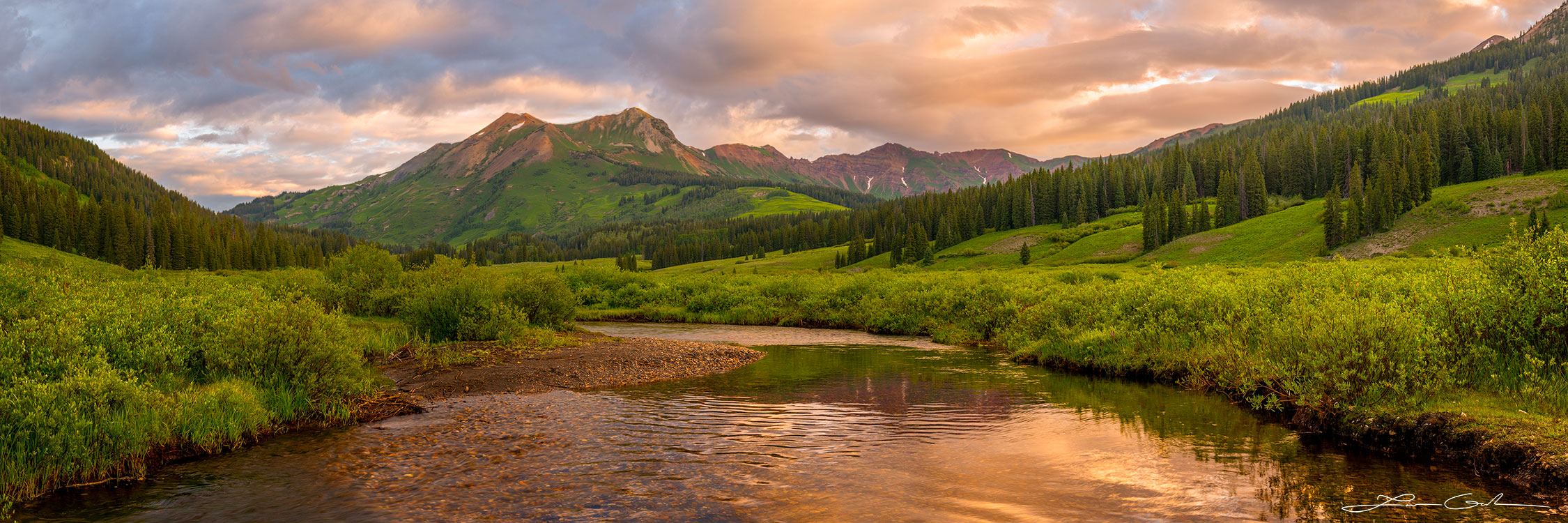
Panoramic Fine Art Photography Prints for Sale Limited Edition Panoramic Photo Prints Gallery Panoramic photography prints are a unique way to represent nature as fine
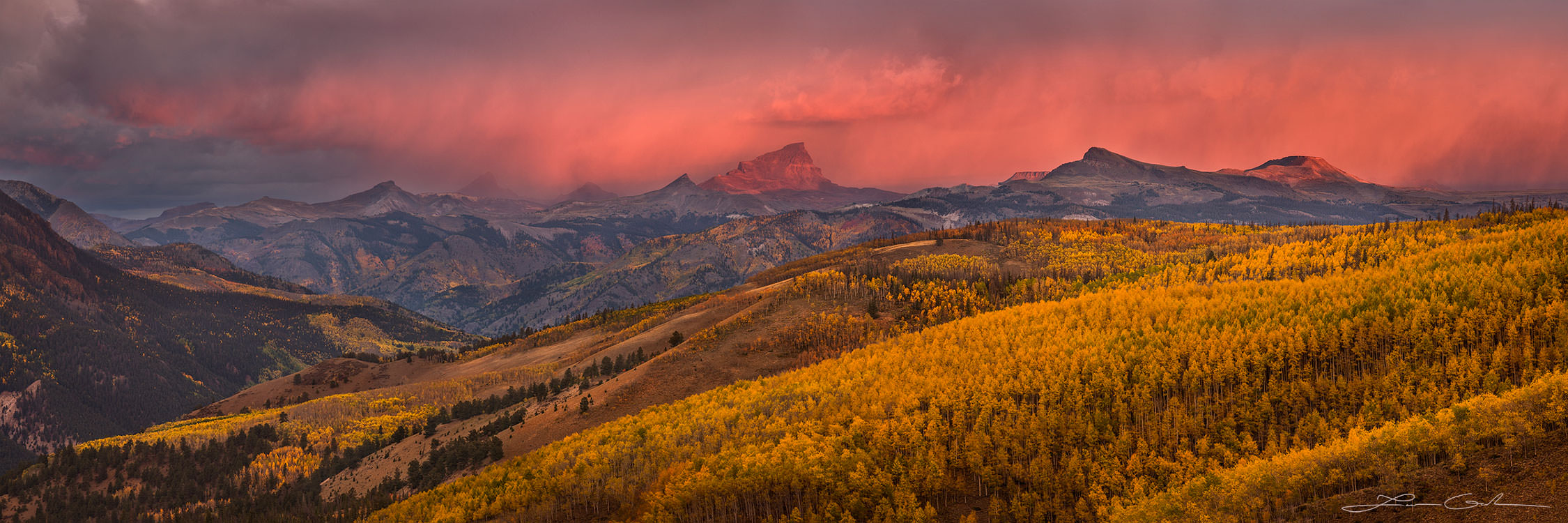
Colorado Panoramic Fine Art Photography Limited Edition Masterworks | Art Gallery Welcome to my Colorado Panoramic Photography gallery. Here you will find some of the
Gintchin Fine Art offers exclusive limited edition fine art photography by Lazar Gintchin, a nature and landscape photographer specializing in large format size prints. Each image in Gintchin’s portfolio is a unique and limited edition print. The gallery includes high-quality wall art prints in acrylic and metal mediums, providing a luxurious fine art presentation. With a diverse range of genres to choose from, art enthusiasts can curate a collection that reflects their aesthetic preferences.